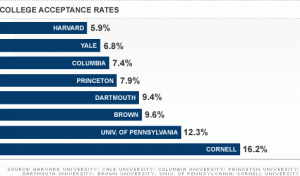This blog originally appeared on the Gates Cambridge blog, A Transformative Experience, on July 29, 2012. I was a Gates Cambridge scholar at the University of Cambridge from 2002-2003. It truly was one of the most transformative experiences of my life from a personal and professional point of view. For many years after my time in the UK I was honored and humbled to serve the Gates Cambridge community in different ways (as a member, and later as a co-chair, of the Alumni Association and as a member of the selection committee for US Scholars). Unlike many other fellowships the Gates Cambridge is very inclusive (citizens of every country except the UK can apply, no age limits, no institutional endorsement needed, any graduate degree Cambridge offers eligible, etc.) and scholars go on to pursue different types of research and professions, as the blog suggests. In some ways the Gates Cambridge spirit is similar to the Olympic spirit with its international style, emphasis on achievement, and attraction for those striving to make the world a better place.

The London Olympics are upon us and they are shaping up to be quite extraordinary from the standpoint of advancing women’s athletics. For instance this will be the first Olympic Games in which every Olympic nation is represented by a female competitor; it’s also the first time that women will compete in every Olympic sport.
As a cultural sociologist and writer who focuses on childhood and athletics among other topics, I believe in the power of sport to effect social change. I also know that sports are a way to shape the next generation by teaching children lessons about competition and life. But those lessons are often shaped by gender and class.
In my academic work I find that many parents, especially those from the upper-middle class, realize how important it is for girls to play competitive sports. Why? Parents perceive that there are numerous long-term benefits in terms of adult professional achievement.
What might these benefits be? I’ll highlight three here, but soon you will be able to read a whole chapter on this topic in my book, Playing to Win: Raising Children in a Competitive Culture. (Note: As part of this research I interviewed parents from 95 families with primary school-age kids involved in chess, dance, and soccer. I was especially interested in understanding how parents of girls chose between the two physical activities [dance and soccer] for their daughters.)
1) Learning how to be part of a team- The team element of competitive youth sports was especially important to many parents I met. Here’s an illustrative quote from one Ivy-League educated soccer (American football) mom:
We have no illusions that our children are going to be great athletes. But the team element (is important). I worked for Morgan Stanley for 10 years, and I interviewed applicants, and that ability to work on a team was a crucial part of our hiring process. So it’s a skill that comes into play much later. It’s not just about ball skills or hand-eye coordination.
2) Learning how to strive to win, be the best, and be aggressive- This same mother went on to explain why she thought ice hockey was such a good choice for her daughter. Her daughter actually played two travel sports– soccer and ice hockey. Her comments also highlight what additional skills children acquire when they make the jump from recreational participation in team sports to competitive youth sports where the emphasis on winning and being aggressive becomes amplified.
When I was interviewing [job candidates] at Morgan Stanley, if I got a female candidate—because it’s banking and you need to be aggressive, you need to be tough—if she played, like, ice hockey, done. My daughter’s playing, and I’m just a big believer in kids learning to be confidently aggressive, and I think that plays out in life assertiveness.
3) Learning to use sports to connect across social boundaries (like sex and class)- You may notice that this mother is a professional who is highly credentialed. This was true of many of the soccer parents that I interviewed. We can think of them as part of the American upper-middle class. Sports are quite important in American upper-middle class culture because athletics celebrate and promote many of the values that are valued in professional work environments. In the past these values (like learning to win, for example) applied more to men than women. But today parents expect the same sort of achievement from their sons and daughters, and see sports as a way to teach this lesson to their daughters. They seem to be on the right track. Recent economic research has found that participation in sports while in secondary school increases the likelihood that a girl attends university, enters the labor market, and enters previously male-dominated occupations.
These classed lessons in femininity are an unexplored way in which gender and class reproduction occurs, beginning in childhood. While we root for athletes from our home nations, and those whose stories resonate with us, during this Summer Olympics it’s important to understand the various social forces that shape these athletes’ past and future achievements, and those who they inspire.



